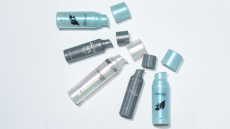Retail study shows significant payback on RFID
bring significant and rapid payback to both manufacturers and
retailers, but also points out the importance of detailed analysis
and customer privacy.
As many of the global leaders in the personal care industry are busy implementing RFID tagging systems to their product packaging, a study carried out by the American Apparel and Footwear Association (AAFA) and the Voluntary Interindustry Commerce Standards Committee (VICS) finds that a close analysis of the specific retail environment is vital to success.
The report, which was prepared by Kurt Salmon Associates (KSA) and entitled 'Moving Forward with Item-Level Radio Frequency Indentification in Apparel/Footware', considers specific business practices and process impacts of RFID on manufacturing, distribution, inventory management, store operations, finance, loss prevention and merchandising in an effort to help companies determine the correct starting point for their RFID evaluations.
The point of departure is an in-depth evaluation of the retail environment, the report highlights. Accordingly, The report also highlights that a detailed study can create 'significant' payback by determining the correct means to implement item-level tagging.
"The results of the white paper indicate clear benefits for RFID item-level tagging for the apparel and footwear value chain, especially at the store level. Companies running pilots are beginning to realize the potential benefits of this technology," said Mary Howell, vice president, industry relations, American Apparel & Footwear Association.
Although the characteristics of the apparel and footwear industry vary from that of the personal care industry, the basic principles to assess the implementation of RFID-tagging are very similar for all FMCG categories.
Another report finding is that no single upstream process can absorb the tag and infrastructure investment of RFID. However, it also pointed out that when combined with retail-level benefits, costs can be offset by improvements in logistical and operational efficiencies.
Considering this scenario, it is inevitable that it will be the manufacturer who will either have to absorb the cost of investment or somehow pass the cost of RFID tagging on to the retailer, justifying this by the cost savings this will present.
Obviously this is a gray area and has already proved to be a source of confrontation, but with the immense power of the world's global retailers, it seems likely that they will have the bigger say in the matter.
According to Joe Andraski, President and CEO of VICS, "Item-level RFID has the potential to bring new levels of inventory visibility and profit improvement, which could not be achieved through conventional means, across the apparel industry. We encourage retailers and suppliers who embark on item-level RFID to responsibly address consumer privacy concerns by adhering to EPCglobal's Guidelines for Consumer Privacy."
Although there is plenty of evidence to suggest that RFID will benefit both manufacturers and retailers, implementing systems at a grassroots level has not proved to be so easy.
A recent study by ABI found that RFID manufacturers - many of them relatively new companies - don't understand retail; and many retailers don't understand how RFID can benefit them. This leaves them frustrated and slows down market adoption, the research company reported. "There's no cookie-cutter approach to RFID," said ABI Research analyst Sara Shah.
Despite the problems it seems that RFID will be unavoidable in the future. Currently the RFID market is estimated to be worth $1.94 billion, but market research firm IDTechEx indicates that massive growth is inevitable in the coming years, which means that by 2015 the industry will eventually be worth an estimated $25 billion.









